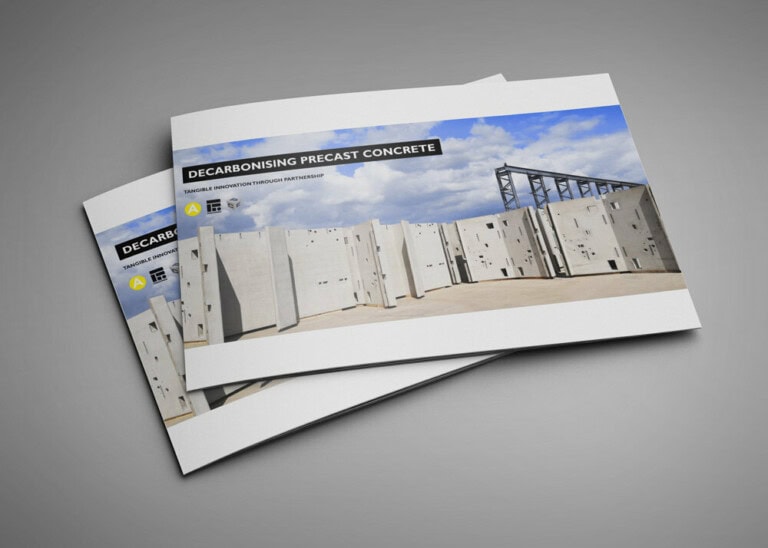Zero cement concrete

Problem Addressed
Concrete is an essential building material, but cement remains one of the largest contributors to man-made carbon emissions. The production of cement accounts for 2.8 billion tonnes of CO2 emissions every year, or 4-8 percent of the world’s total man-made CO2 output, according to The Guardian.
Case Study
EFC has already been used at scale and more than 80,000 m³ has been poured on construction projects across the world, including trials with major UK organisations such as HS2, National Highways, Network Rail and the Environment Agency.
Case Study: Bentonite Silo Spill (Raft Slab & Walls) @ HS2 Euston – Mace Dragados JV & John F Hunt
Engineering firm John F Hunt, working for HS2’s station construction partner Mace Dragados Joint Venture (JV), completed the 232m3 concrete pour in early September. EFC reduces the amount of carbon embedded into the concrete, saving over 76t of CO2 overall. It was supplied by Capital Concrete and has been used as a foundation slab that will support polymer silos used for future piling works at the north of the Euston Station site. The project was the largest single pour of EFC to date in the UK. While the foundation is temporary, it will be in use for two years, and historically would have been constructed with a more traditional cement-based concrete. This is a step forward in understanding how low carbon concrete can be used more widely in construction going forward.
EFC is made from a combination of ground granulated blast furnace slag, pulverised fly ash and a high-alkaline chemical, rather than Portland cement. Its geopolymer binder system reduces embodied carbon by around 70% saving 250kg of CO2 per cubic metre poured. The pour will help support HS2’s objective of net-zero construction by 2035 and achieve its goal of halving the amount of carbon in the construction of Britain’s new high speed rail line.
Facts and Figures
This page presents data, evidence, and solutions that are provided by our partners and members and should therefore not be attributed to UKGBC. While we showcase these solutions for inspiration, to build consensus, and create momentum for climate action, UKGBC does not offer commercial endorsement of individual solutions. If you would like to quote something from this page, or more information, please contact our Communications team at media@ukgbc.org.
Related
Sensors and AI to predict concrete curing time

Decarbonising Precast Concrete

Cement alternatives

Carbon performance scoring and verification tool for construction

